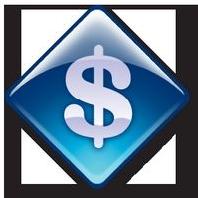
 |
|
| Financial Terms | |
| Production-flow commitment |
|
Information about financial, finance, business, accounting, payroll, inventory, investment, money, inventory control, stock trading, financial advisor, tax advisor, credit.
Main Page: accounting, stock trading, payroll, credit, inventory, finance, investment, inventory control, Also see related: home insurance, financing, property, buy home, real estate, insurance, credit, home buyer, homebuying, |
Definition of Production-flow commitment
Production-flow commitmentAn agreement by the loan purchaser to allow the monthly loan quota to be
Related Terms:NPV (net present value of cash flows)Same as PV, but usually includes a subtraction for an initial cash outlay. PV (present value of cash flows)the value in today’s dollars of cash flows that occur in different time periods. Advance commitmentA promise to sell an asset before the seller has lined up purchase of the asset. This Cash flowIn investments, it represents earnings before depreciation , amortization and non-cash charges. Cash flow after interest and taxesNet income plus depreciation. Cash flow coverage ratioThe number of times that financial obligations (for interest, principal payments, Cash flow from operationsA firm's net cash inflow resulting directly from its regular operations  Cash flow matchingAlso called dedicating a portfolio, this is an alternative to multiperiod immunization in Cash flow per common shareCash flow from operations minus preferred stock dividends, divided by the Cash flow time-lineLine depicting the operating activities and cash flows for a firm over a particular period. Cash-flow break-even pointThe point below which the firm will need either to obtain additional financing CommitmentA trader is said to have a commitment when he assumes the obligation to accept or make Commitment feeA fee paid to a commercial bank in return for its legal commitment to lend funds that have Discounted cash flow (DCF)Future cash flows multiplied by discount factors to obtain present values. Discretionary cash flowCash flow that is available after the funding of all positive NPV capital investment Equivalent annual cash flowAnnuity with the same net present value as the company's proposed investment.  Expected future cash flowsProjected future cash flows associated with an asset of decision. Firm commitment underwritingAn undewriting in which an investment banking firm commits to buy the Flower bondGovernment bonds that are acceptable at par in payment of federal estate taxes when owned by Flow-through basisAn account for the investment credit to show all income statement benefits of the credit Flow-through methodThe practice of reporting to shareholders using straight-line depreciation and Free cash flowsCash not required for operations or for reinvestment. Often defined as earnings before Incremental cash flowsDifference between the firm's cash flows with and without a project. Nominal cash flowA cash flow expressed in nominal terms if the actual dollars to be received or paid out are given. Operating cash flowEarnings before depreciation minus taxes. It measures the cash generated from Price-specie-flow mechanismAdjustment mechanism under the classical gold standard whereby Production payment financingA method of nonrecourse asset-based financing in which a specified Real cash flowA cash flow is expressed in real terms if the current, or date 0, purchasing power of the cash Scheduled cash flowsThe mortgage principal and interest payments due to be paid under the terms of the Statement of cash flowsA financial statement showing a firm's cash receipts and cash payments during a Statement-of-cash-flows methodA method of cash budgeting that is organized along the lines of the statement of cash flows. WallflowerStock that has fallen out of favor with investors; tends to have a low P/E (price to earnings ratio). CASH-FLOW STATEMENTA statement that shows where a company’s cash came from and where it went for a period of time, such as a year. CASH FLOWS FROM FINANCING ACTIVITIESA section on the cash-flow statement that shows how much cash a company raised by selling stocks or bonds this year and how much was paid out for cash dividends and other finance-related obligations. CASH FLOWS FROM INVESTING ACTIVITIESA section on the cashflow statement that shows how much cash came in and went out because of various investing activities like purchasing machinery. CASH FLOWS FROM OPERATIONSA section on the cash-flow Stockholders’ equity statement that shows how much cash came into a company and how much went out during the normal course of business. UNITS OF PRODUCTIONA depreciation method that relates a machine’s depreciation to the number of units it makes each Cash Flow statementA financial report that shows the movement in cash for a business during an accounting period. Discounted cash flow (DCF)A method of investment appraisal that discounts future cash flows to present value using a discount rate, which is the risk-adjusted cost of capital. Non-production overheadA general term referring to period costs, such as selling, administration and financial expenses. Production overheadA general term referring to indirect costs. Statement of Cash FlowsOne of the basic financial statements; it lists the cash inflows and cash outflows of the company, grouped into the categories of operating activities, financing activities, and investing activities. The Statement of Cash flows is prepared for a specified period of time. cash flowAn obvious but at the same time elusive term that refers to cash cash flow from operating activities, or cash flow from profitThis equals the cash inflow from sales during the period minus the cash statement of cash flowsOne of the three primary financial statements discounted cash flow (DCF)Refers to a capital investment analysis technique free cash flowGenerally speaking, this term refers to cash flow from negative cash flowThe cash flow from the operating activities of a business operating cash flowSee cash flow from operating activities. Free Cash FlowThe funds available for distribution to the capital providers of the Operating Cash FlowIncome available after the payment of taxes, plus the value of the cash flowthe receipt or disbursement of cash; when related cost of production reporta process costing document that economic production run (EPR)an estimate of the number equivalent units of production (EUP)an approximation of the number of whole units of output that could have been operations flow documenta document listing all operations Cash flowCash received and paid over time. Discounted cash flowA technique that determines the present value of future cash Production yield varianceThe difference between the actual and budgeted proportions Statement of cash flowsPart of the financial statements; it summarizes an entity’s cash statement of cash flowsFinancial statement that shows the firm’s cash receipts and cash payments over a period of time. Aggregate Production FunctionAn equation determining aggregate output as a function of aggregate inputs such as labor and capital. Capital FlowsPurchase by foreigners of our assets (capital inflows) or our purchase of foreign assets (capital outflows). Circular FlowIncome payments to factors of production are spent to buy output. The receipts from these sales are used to pay factors of production, creating a circular flow of income. Factor of ProductionA resource used to produce a good or service. The main macroeconomic factors of production are capital and labor. Adjusted Cash Flow Provided by Continuing OperationsCash flow provided by operating Cash Flow Provided by Operating ActivitiesWith some exceptions, the cash effects of transactions Cash Flow Provided or Used from Financing ActivitiesCash receipts and payments involving Cash Flow Provided or Used from Investing ActivitiesCash receipts and payments involving Cash Flow–to–Income Ratio (CFI)Adjusted cash flow provided by continuing operations Lean productionThe technique of stripping all non-value-added activities from Process flow productionA production configuration in which products are continually Cash FlowIn investments, NET INCOME plus DEPRECIATION and other noncash charges. In this sense, it is synonymous with CASH EARNINGS. Investors focus on cash flow from operations because of their concern with a firm's ability to pay dividends. Cash Flow ForecastAn estimate of the timing and amount of a company's inflows and outflows of money measured over a specific period of time typically monthly for one to two years then annually for an additional one to three years. Discounted Cash FlowTechniques for establishing the relative worth of a future investment by discounting (at a required rate of return) the expected net cash flows from the project. Related to : financial, finance, business, accounting, payroll, inventory, investment, money, inventory control, stock trading, financial advisor, tax advisor, credit. |